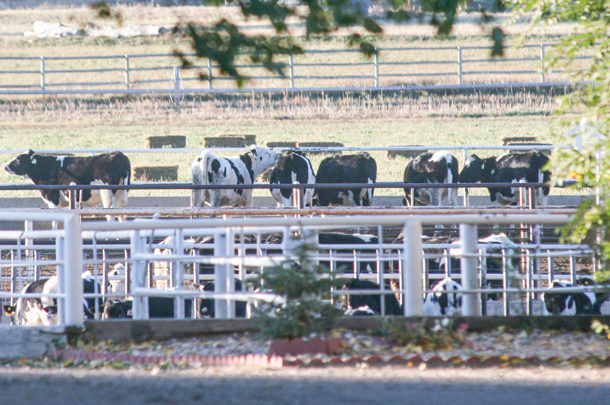To achieve that, there are a lot of important aspects to consider.
Of course, feeding, housing and management have their influence; however, this article will focus on how to breed a cow that makes money for the dairy farmer.
In a commercial dairy operation, most farmers don’t try to make money with selling embryos or other high-indexed breeding material. So most profit is from milk production, which is maximized with lower costs.
Their youngstock don’t make them money until they enter the milking string. Once the animal starts producing milk, there should be as few disappointments as possible.
There is no shortcut when it comes to improving cattle. Cattle improvement takes time, patience and a goal the farmer wants to achieve. Genomics is a tool some producers are turning to for herd improvement, but focusing on proven bulls continues to have merit for the commercial-minded dairy farmer.
Genomics can overestimate the breeding values for bulls. An example of this is as follows. A researcher took 66 genomic bulls that were available at the time. He also took five decent bulls with daughters milking that he would have used at the time (Peinzer Boy, Jorryn, Win 395, Bertil and Cricket).
Table 1 shows that the breeding bulls lose half of their breeding value, whereas the genomic bulls lose 72 percent of their breeding value.

The variety in the loss of the index is also much higher in the genomic bulls.
Late maturing
Commercial dairy farms are interested in late maturing as it means higher milk production in later lactations. Table 2 shows two examples from the Netherlands.

Bulls that show growth in kilograms of fat and protein will bring much better daughters in their fourth and fifth lactation, which are the lactations where the cow really starts to make money. Patience with a heifer can pay off in the end for a farmer. The index system, as it is now, is based highly on the first lactation.
For the dairy farmer, it is more important to know how the cows develop and grow out. Information on this can be found in actual, realized 305-day productions over five lactations. Here a farmer can easily see what the daughters really do and how they grow out.
This information, combined with survival rates of the bulls, can give dairy producers a very good view of how their herd will perform. If a bull brings daughters that stay in the herd, it says a lot. It says the cow performs very well, gets in calf again, has hardly any troubles and last, but not least, it says the farmer is happy with her.
If that is not the case, either the farmer is not happy or the cow does not perform well.
For the commercial dairy farmer, well-proven breeding bulls continue to be a great option for sire selection. If you know better what your youngstock are going to do, then you can keep less of them. If your cows live longer with fewer problems and lower costs, you will make more money.
Consider using proven Holstein bulls to achieve your goals. If you’d like to do some testing, you can put some young bulls on second calvers, but only at a maximum of 20 percent young bulls. ![]()
References omitted but are available upon request. Click here to email an editor.
PHOTO: Proven bulls continue to be useful in the advancement of commercial herds. Staff photo.
Reurt Boelema is an Export Manager with K.I. Samen. Email Reurt Boelema.









